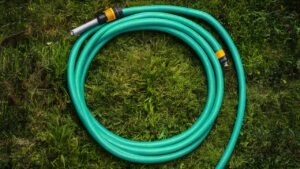Are you looking to add a trolling motor to your kayak and wondering how to get it registered? You’re not alone.
Many kayak enthusiasts like you are eager to enhance their paddling experience with a motor but aren’t sure where to start with the paperwork. Registering your kayak with a trolling motor might seem like a daunting task, but it doesn’t have to be.
Imagine gliding effortlessly through the water, exploring new territories with ease, and knowing that everything is legal and above board. This guide is designed to make the registration process smooth and stress-free for you. So, stick around as we break down the steps and provide you with insider tips to get your kayak ready for the next big adventure.
Benefits Of Registering A Kayak
Registering a kayak with a trolling motor offers safety benefits and legal compliance. It ensures your vessel is identifiable and meets local regulations. This process often provides peace of mind while enhancing your overall boating experience.
Registering a kayak with a trolling motor can seem like just another administrative task, but it comes with a host of benefits that might surprise you. From legal protections to enhanced enjoyment of your water adventures, registering your kayak ensures you’re ready to navigate the waterways with ease and confidence.
Enhanced Legal Protection
Registering your kayak is crucial for staying compliant with local boating laws. It provides you with legal protection, ensuring your watercraft is recognized and accounted for. This not only shields you from fines but also affirms your commitment to safe boating practices. Have you ever found yourself on the water, worrying about an unexpected encounter with law enforcement? Registration eliminates that worry, letting you focus on the fun part—fishing with your trolling motor.
Access To Restricted Areas
Some waterways are restricted to registered vessels only. By registering your kayak, you open doors to new paddling and fishing opportunities. Imagine discovering a serene lake or river, teeming with fish, that only registered crafts can access. This small step in paperwork can lead to big adventures. You gain access to exclusive spots where nature is untouched and fish are plenty.
Enhanced Safety Measures
Registered kayaks are often eligible for safety courses and workshops. As a registered owner, you can participate in local boating events that focus on safety and skill enhancement. These events not only boost your confidence but equip you with tips and techniques to handle unexpected situations. Have you ever attended one of these workshops and learned a trick that saved your day on the water? It’s worth the effort to register for the added benefits.
Increased Resale Value
Thinking of upgrading your kayak someday? A registered kayak often fetches a higher resale value. Buyers prefer vessels with proper documentation as it assures them of the craft’s legitimacy and history. If you’ve ever sold a piece of equipment, you know how much easier it is when everything is in order. With a registration, your kayak’s value is enhanced, attracting more potential buyers.
Peace Of Mind
The peace of mind that comes with registering your kayak is priceless. You can paddle out without the nagging thought of whether your craft is compliant with regulations. It’s liberating to enjoy your time on the water, knowing everything is squared away legally. How often do you wish for less hassle and more enjoyment during your hobbies? Registration is a simple step that ensures you can focus on what truly matters—your love for kayaking. Registering your kayak with a trolling motor is more than a formality; it’s an investment in your water adventures. It enhances your experience, provides legal safeguards, and opens up new possibilities for exploration. Consider taking this step to elevate your kayaking journey.
Understanding Kayak Registration Requirements
Registering a kayak with a trolling motor involves understanding local laws and preparing necessary documents. Ensure you have the kayak’s serial number and proof of purchase ready. Contact your local registration office for specific forms and fees.
Understanding kayak registration requirements is crucial when you decide to add a trolling motor to your kayak. This step ensures you comply with legal standards and avoid any penalties. You might think it’s a tedious process, but understanding the rules can save you a lot of trouble.
State-specific Regulations
Each state has its own set of rules for registering kayaks with trolling motors. Some states require registration for any motorized vessel, regardless of size. Others might only require it if your kayak exceeds a certain length. It’s vital to check the specific regulations in your state. I remember when I first registered my kayak in Florida, the process was straightforward, but it required a bit of research beforehand. What are the rules where you live?
Exceptions And Exemptions
Not every kayak needs registration. In some states, non-motorized kayaks are exempt from registration. However, attaching a trolling motor often changes that status. In certain regions, kayaks used only in private waters may be exempt. Understanding these exemptions can save you time and money. Always double-check if your kayak qualifies for any exceptions before proceeding with registration. Have you ever thought about the implications of not registering your kayak correctly? Missing out on these details can lead to fines or restrictions, which can spoil a great day on the water. Stay informed and enjoy your kayaking adventures without any legal hassles.
Gathering Necessary Documents
Before you can officially register your kayak with a trolling motor, you’ll need to gather some important documents. This step ensures that the process goes smoothly without any unexpected hiccups. Let’s break down the essential paperwork you’ll need to have on hand.
Proof Of Ownership
Having proof of ownership is a must when registering your kayak. This document shows that you legally own the kayak and have the right to register it. Your proof can be a sales receipt from the purchase or a title if one was issued.
Think about that moment when you bought your kayak. Perhaps you were excited, imagining the adventures ahead. That receipt you probably tucked away in a drawer is now essential. It confirms your purchase and serves as a vital piece of evidence for registration.
Identification Requirements
Alongside proof of ownership, you need valid identification. This is your way of saying, “Yes, I am who I say I am.” A government-issued ID, like a driver’s license or passport, typically suffices.
Consider what ID you usually carry. Is it your driver’s license? Perhaps you have a state ID card instead. Whichever it is, make sure it’s current and not expired, as this will be required to verify your identity in the registration process.
Gathering these documents might seem straightforward, but have you ever misplaced something important? It happens to all of us. Make sure to organize these papers in advance so that when you’re ready to register, everything is at your fingertips.
So, are you all set to move to the next step in registering your kayak? With your documents ready, you’re well on your way to enjoying your time on the water with peace of mind.
Understanding Trolling Motor Regulations
Registering a kayak with a trolling motor involves understanding specific regulations. These rules ensure safety and environmental protection. Knowing them helps avoid penalties and ensures compliance. This guide will walk you through crucial aspects of these regulations.
Motor Power Limits
Each state sets its own motor power limits. These limits depend on waterway types and usage. Always check local laws before installing a trolling motor. Exceeding power limits can lead to fines and penalties. Staying informed helps you enjoy your kayaking experience.
Environmental Considerations
Environmental regulations protect aquatic ecosystems. Trolling motors should minimize water pollution. Electric motors are preferred for their low environmental impact. Noise levels must also be considered. Quiet motors help preserve wildlife habitats. Compliance with these regulations ensures sustainable boating practices.
Filling Out The Registration Application
Registering a kayak with a trolling motor involves filling out the registration application accurately. Provide details like your kayak’s serial number, motor specifications, and owner information. Ensure all documents are complete to avoid delays in the registration process.
Filling out the registration application for your kayak with a trolling motor might feel like a mundane task, but it’s your ticket to a legal and hassle-free adventure on the water. Attention to detail can save you from unnecessary delays and ensure your kayak is ready to hit the waves. Let’s break down the process to make it as smooth as possible for you.
Application Forms
Start by obtaining the right application forms. These can usually be found on your state’s Department of Motor Vehicles (DMV) or equivalent website. Download the form, or pick one up in person if you prefer. Ensure you have the specific form for vessels with motors, as different rules may apply compared to non-motorized kayaks. Before you start filling it out, gather all necessary information. This typically includes your personal details, the kayak’s specifications, and the motor’s serial number. Double-check everything you write to avoid errors. Remember, neatness counts—legible handwriting can prevent misunderstandings.
Common Mistakes To Avoid
One of the most common errors is incomplete information. Missing out on essential details like the hull identification number or motor specifics can lead to processing delays. Double-check you’ve filled out each section fully before submission. Another pitfall is incorrect payment. Ensure you know the exact fee, as registration costs can vary by state and vessel type. Using the wrong payment method or amount can result in your application being returned. Consider whether you’re using an outdated form. Regulations change, and using an old form might mean you’re not compliant with current laws. Always download the latest version from the official website. Have you ever rushed through paperwork only to realize you missed a crucial step? Taking a bit of extra time now can save you the headache of resubmitting later. Have you checked if your state requires additional documents? Some might need proof of ownership or a bill of sale for the trolling motor. Get your application right the first time, and you’ll be gliding across the water with peace of mind. What’s your biggest worry when registering your kayak? Address it proactively to make the process stress-free.
Paying Registration Fees
Registering a kayak with a trolling motor involves submitting the necessary documents and paying registration fees. Ensure all details are correct to avoid delays. Visit your local registration office or use online services for a quicker process.
Paying the registration fees for your kayak with a trolling motor might seem like just another step in the process, but it’s an essential one. Understanding the costs and methods involved can save you time and frustration. Once you know the breakdown and payment options, you’ll find this task much more manageable.
Fee Breakdown
The fee for registering a kayak with a trolling motor varies by state. Typically, it includes a base registration fee and may have additional charges for the motor. For example, some states charge extra for electric motors due to environmental fees. It’s important to check your local regulations to get an accurate total. Use a simple table to keep track of costs. It’s a great way to ensure you’re not caught off guard by unexpected charges.
Payment Methods
You’ll likely find various payment methods available, making it convenient for you to complete the process. Many state offices accept credit or debit cards, which is perfect if you’re registering online or over the phone. If you prefer a more traditional method, you can pay by check or money order in person or by mail. Some states even offer mobile payment options, so you can pay directly from your smartphone. Isn’t it great how technology simplifies things? Before you head to the registration office, double-check which payment methods are accepted. This simple step can prevent a wasted trip and ensure a smooth transaction. Have you ever paid a fee only to find out you missed a discount or rebate opportunity? It’s worth asking if there are any available when you register your kayak.
Submitting Your Application
Registering a kayak with a trolling motor involves gathering necessary documents like proof of ownership and ID. Complete the application form and pay any required fees to ensure your kayak is legally registered.
Submitting your application for registering a kayak with a trolling motor might seem daunting, but it’s actually straightforward. Whether you choose to submit online or in person, each option has its unique benefits. You just need to decide which method works best for you. Let’s dive into the details of each submission process.
Online Submission
Submitting your application online is a convenient option that saves time. You can complete the process from the comfort of your home. Imagine sipping coffee while checking off this task effortlessly. Simply visit the official website of your local boating authority. They often have a dedicated section for registration. Fill out the necessary forms. Typically, this includes your personal details, kayak specifications, and trolling motor information. Ensure you have digital copies of any required documents. These might include proof of purchase or identification. Once everything is uploaded, double-check your entries. A small typo can lead to delays. Payment is usually done via credit card or electronic transfer. It’s swift and secure. In a matter of clicks, your application will be submitted. You’ll receive a confirmation email shortly after. Doesn’t it sound easy? You might wonder why you haven’t tried it before.
In-person Submission
Opting for an in-person submission gives you the chance to clarify doubts immediately. Visit your local registration office. It’s a great opportunity to engage directly with knowledgeable staff. Bring all necessary documents with you. Original copies are often preferred, so double-check the requirements. There’s an advantage in having someone review your application in real-time. They can alert you to any missing information before you leave. Ask questions if you’re unsure about any part of the process. Personal interaction can provide insights that online forums might miss. Payment methods vary, but cash, check, and card are common. Once completed, you leave with peace of mind knowing your application is in good hands. Have you ever wondered if this face-to-face approach could lead to quicker processing times? Both submission methods have their perks. Your choice depends on your preference for convenience or personal interaction.
Receiving And Displaying Registration
Registering a kayak with a trolling motor requires understanding local regulations. Gather necessary documents, including proof of ownership and motor specifications. Submit forms to the appropriate agency to display registration and enjoy your water adventures legally.
Receiving and displaying your kayak’s registration is a vital step in ensuring you’re compliant and ready to hit the waters with your trolling motor. Once you’ve navigated through the registration process, the next task is to properly display your registration number. This might seem like a simple task, but it’s crucial for legality and safety.
Displaying The Registration Number
After receiving your registration, it’s important to display the number prominently on your kayak. The number needs to be visible from both sides of the kayak, typically near the bow. Ensure the numbers are at least three inches high and in a contrasting color to your kayak for visibility. Consider using decals for a professional look. They’re durable and withstand weather conditions better than paint. When I registered my kayak, I used high-quality decals and found them easy to apply and maintain. How will you ensure your numbers stay visible and intact throughout the season?
Renewal And Expiration
Kayak registrations are typically valid for a specific period, often one to three years. It’s important to keep track of your registration’s expiration date to avoid penalties. Mark your calendar or set a reminder on your phone as the expiration date approaches. Renewing your registration is generally straightforward. Many states offer online renewal options, making the process quick and convenient. When my registration was up for renewal, I appreciated the ease of the online system. What methods work best for you to remember important deadlines like these? Keeping your kayak registered and up-to-date ensures you’re always ready for your next adventure. It also shows respect for local regulations and helps support waterway maintenance efforts. By ensuring your registration is current and visible, you contribute to safe and enjoyable waterways for everyone.
Troubleshooting Common Issues
Registering a kayak with a trolling motor can be tricky. Ensure you have necessary documents, including ownership proof and motor details. Contact your local registration office for specific requirements and fees.
Registering your kayak with a trolling motor can sometimes lead to unexpected hurdles. While the process seems straightforward, you might face issues that can delay or complicate registration. Understanding common problems can help you smoothly navigate the process and get back to enjoying your water adventures. Let’s dive into two frequent issues: delayed processing and incorrect information.
Delayed Processing
Experiencing a lag in processing your registration can be frustrating. It’s like being stuck in a queue when all you want is to hit the water. Often, delays occur due to incomplete documentation. Double-check that you’ve submitted all required forms and fees. If you’re still facing delays, consider reaching out directly to the registration office. A quick phone call can sometimes reveal a simple fix—maybe a missing signature or an overlooked detail. Patience and persistence are your best allies here. Have you ever waited longer than expected for something important? What did you do to expedite the process?
Incorrect Information
Mistakes happen. Incorrect information on your registration forms can lead to processing errors. Ensure all details, like your kayak’s serial number and your personal information, are accurate. A small typo can result in big headaches. If you realize there’s an error after submission, don’t panic. Contact the registration office promptly. Many offices are equipped to handle corrections efficiently. It’s essential to keep a record of your communications. Did you ever have to correct an error on a vital document? How did you ensure accuracy moving forward? Addressing these issues head-on not only saves time but also ensures you’re ready to explore the waters with peace of mind. Having a plan for these common issues means you’re prepared for a smoother registration journey.

Frequently Asked Questions
Do I Need To Register A Kayak With A Trolling Motor?
Yes, you usually need to register a kayak with a trolling motor. Requirements vary by state, so it’s essential to check local regulations. Registration typically involves submitting an application, paying a fee, and displaying a registration number on your kayak.
What Documents Are Required For Kayak Registration?
You generally need proof of ownership and identification for kayak registration. This could include a bill of sale and a government-issued ID. Some states may require additional documents like a completed registration form or proof of tax payment. Always verify the specific requirements in your state.
How Much Does Kayak Registration Cost?
Kayak registration costs vary by state and are usually minimal. Fees can range from $10 to $100. Factors influencing the cost include the kayak’s size and motor power. Always check your state’s specific fee structure for the most accurate information.
How Long Does Kayak Registration Take?
The registration process duration varies by state but usually takes a few weeks. Some states offer online registration for faster processing. It’s advisable to apply well before you plan to use the kayak.
Conclusion
Registering a kayak with a trolling motor is simple. Follow the steps carefully. Ensure you have all necessary documents ready. Check your state’s specific requirements. Visit the local registration office or their website. Fill out forms accurately. Pay the required fees.
Keep your registration proof handy. Enjoy your kayaking adventures legally. Stay informed about renewal deadlines. Regularly check for updates in regulations. Happy kayaking!








